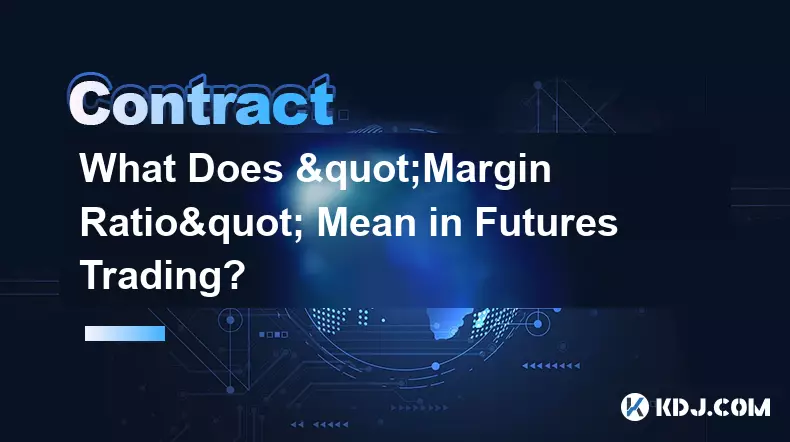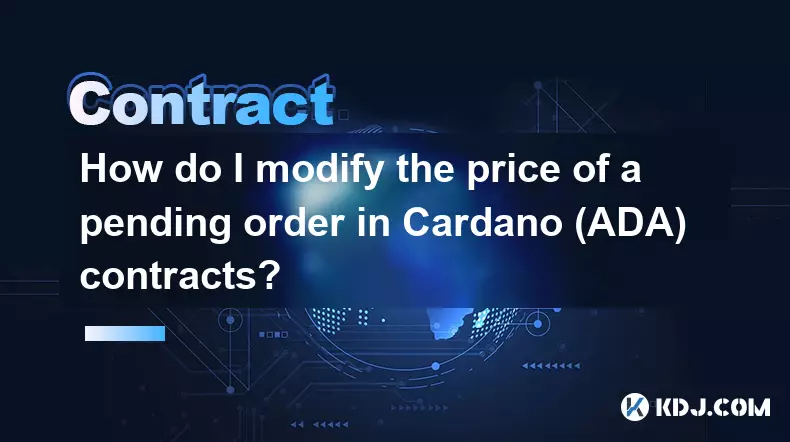-
 bitcoin
bitcoin $109523.663807 USD
-0.13% -
 ethereum
ethereum $4019.526508 USD
2.06% -
 tether
tether $1.000482 USD
0.00% -
 xrp
xrp $2.776815 USD
0.18% -
 bnb
bnb $958.942396 USD
0.12% -
 solana
solana $204.294698 USD
3.84% -
 usd-coin
usd-coin $0.999693 USD
0.00% -
 dogecoin
dogecoin $0.232115 USD
2.09% -
 tron
tron $0.338028 USD
0.84% -
 cardano
cardano $0.790920 USD
1.50% -
 hyperliquid
hyperliquid $44.871443 USD
5.60% -
 ethena-usde
ethena-usde $1.000322 USD
0.04% -
 chainlink
chainlink $21.034165 USD
2.60% -
 avalanche
avalanche $28.794831 USD
-0.54% -
 stellar
stellar $0.360466 USD
1.24%
What Does "Margin Ratio" Mean in Futures Trading?
The margin ratio in futures trading measures account health by comparing total margin balance to maintenance margin, helping traders avoid liquidation.
Sep 20, 2025 at 12:00 pm

Understanding Margin Ratio in Futures Trading
1. The margin ratio is a critical metric used in futures trading to assess the health of a trader’s position. It reflects the relationship between the maintenance margin and the total margin balance in a futures account. When traders open leveraged positions, they are required to deposit a certain amount of collateral, known as the initial margin. As market prices fluctuate, the value of the position changes, which impacts the available equity.
2. This ratio helps determine how close a trader is to facing liquidation. If the margin ratio drops to or below zero, it indicates that the account no longer meets the minimum maintenance requirements, triggering an automatic liquidation process. Exchanges and brokers use this calculation to manage risk and protect themselves from potential losses due to defaulted positions.
3. A high margin ratio suggests that the account has sufficient funds relative to its liabilities, meaning the position is secure even if the market moves slightly against it. Conversely, a low margin ratio signals vulnerability, especially in volatile markets where rapid price swings can quickly erode equity.
4. Traders must monitor their margin ratio continuously, particularly during periods of high volatility. Automated systems often provide real-time updates on this figure, allowing users to add more funds (margin top-up) or reduce leverage before reaching dangerous levels.
How Is Margin Ratio Calculated?
1. The formula for calculating the margin ratio is: (Total Margin Balance - Maintenance Margin) / Total Margin Balance × 100%. This gives a percentage value representing the buffer remaining before liquidation occurs. Some platforms may present it differently, such as comparing equity to maintenance margin requirements.
2. For example, if a trader’s total margin balance is $10,000 and the maintenance margin required for their current position is $900, the margin ratio would be ($10,000 - $900) / $10,000 = 91%. This indicates a strong position with a large safety cushion.
3. Different exchanges apply varying methods to compute this ratio based on whether isolated or cross-margin modes are used. In isolated margin mode, only the allocated margin for a specific trade counts toward the calculation. In cross-margin mode, all available account equity supports open positions.
4. Understanding the exact method used by a particular exchange is essential because discrepancies in interpretation can lead to unexpected liquidations. Always review the platform's documentation to know how your margin ratio is derived.
Risks Associated with Low Margin Ratios
1. A declining margin ratio increases the probability of liquidation, especially in fast-moving markets. Once the available margin falls below the maintenance threshold, the system may begin closing positions automatically, often at unfavorable prices.
2. Partial or full liquidation results in immediate loss of capital and eliminates any chance of recovery if the market reverses afterward. Many traders experience frustration when their positions get liquidated just before a favorable turnaround.
3. High leverage amplifies both gains and losses, making margin ratios drop faster during adverse price movements. A 100x leveraged position can be wiped out by a mere 1% move against the trader, drastically reducing the margin ratio in seconds.
4. Slippage during extreme volatility can further worsen outcomes. Even if a stop-loss is set, gaps in pricing might result in execution far below expected levels, accelerating the depletion of margin balance.
Strategies to Maintain a Healthy Margin Ratio
1. Reducing leverage is one of the most effective ways to maintain a stable margin ratio. While high leverage offers larger returns, it also brings heightened risk. Conservative leverage allows more room for price fluctuations without endangering the position.
2. Regularly topping up margin balances prevents sudden drops in the ratio. Proactive funding ensures that even during drawdowns, the account remains above critical thresholds.
3. Using stop-loss orders helps limit downside exposure. Although not foolproof, these tools assist in preserving capital and maintaining acceptable margin levels under adverse conditions.
4. Diversifying across uncorrelated assets reduces overall portfolio risk. Concentrating too much capital on a single futures contract can lead to sharp declines in margin ratio if that asset experiences turbulence.
Frequently Asked Questions
What happens when the margin ratio reaches zero?When the margin ratio hits zero, the position is considered undercollateralized. Most trading platforms will initiate liquidation immediately to prevent further losses. The trader loses the entire margin allocated to that position, and any remaining debt may be covered by insurance funds or socialized losses depending on the exchange.
Can I increase my margin ratio after opening a position?Yes, traders can manually add funds to their margin account to boost the margin ratio. This action increases the total margin balance, thereby improving the buffer against liquidation. Most platforms allow instant transfers from spot wallets to futures accounts for this purpose.
Does funding rate affect the margin ratio?Indirectly, yes. Funding payments—whether paid or received—affect the equity in a futures account. Regular outflows due to high funding rates can gradually reduce the margin balance, lowering the margin ratio over time, especially in prolonged trades.
Is the margin ratio the same across all cryptocurrency exchanges?No, each exchange defines and calculates the margin ratio according to its own risk model. Some display it as a percentage, others as a decimal or even a simple warning indicator. Differences in maintenance margin requirements and leverage rules also contribute to variation in how the ratio behaves across platforms.
Disclaimer:info@kdj.com
The information provided is not trading advice. kdj.com does not assume any responsibility for any investments made based on the information provided in this article. Cryptocurrencies are highly volatile and it is highly recommended that you invest with caution after thorough research!
If you believe that the content used on this website infringes your copyright, please contact us immediately (info@kdj.com) and we will delete it promptly.
- Ethereum Price Crash Concerns: Navigating the Volatility
- 2025-09-27 16:45:11
- Bitcoin's Bull Flag and FVG: Decoding the Crypto Crystal Ball
- 2025-09-27 16:25:14
- Ozak AI's $OZ Token: Riding the AI & Blockchain Profit Surge
- 2025-09-27 16:25:14
- Remittix Token Presale: CertiK Verification and PayFi Innovation
- 2025-09-27 16:30:00
- XRP Chart Signal Sparks Price Rally Buzz: Is a Breakout Imminent?
- 2025-09-27 16:45:11
- Vitalik, Chat Control, and Privacy Security: A Balancing Act
- 2025-09-27 16:30:00
Related knowledge

How do I enable the "scalping-only" mode for Cardano (ADA) contracts?
Sep 24,2025 at 03:19am
Understanding Scalping Strategies in Crypto Derivatives1. Scalping in cryptocurrency trading refers to executing multiple short-term trades within min...

What is the maximum position limit for Cardano (ADA) contracts?
Sep 23,2025 at 11:00pm
Understanding ADA Futures and Derivatives Market Structure1. Cardano (ADA) futures contracts are offered by several major cryptocurrency derivatives e...

What is the maker fee for Cardano (ADA) contracts?
Sep 26,2025 at 09:01am
Understanding Maker Fees in Cardano (ADA) Contracts1. The concept of maker fees applies broadly across decentralized exchanges and smart contract plat...

How can I view open interest in Cardano (ADA) contracts?
Sep 24,2025 at 07:36am
Understanding Open Interest in Cardano Derivatives1. Open interest refers to the total number of outstanding derivative contracts, such as futures or ...

How do I modify the price of a pending order in Cardano (ADA) contracts?
Sep 27,2025 at 01:00am
Understanding Pending Orders in Cardano Smart Contracts1. Cardano operates on a proof-of-stake blockchain that supports smart contracts through its Pl...

What is the function of the insurance fund in Cardano (ADA) contracts?
Sep 24,2025 at 02:18am
Understanding the Role of Insurance Funds in Cardano Smart Contracts1. The insurance fund within Cardano's ecosystem is not a native feature directly ...

How do I enable the "scalping-only" mode for Cardano (ADA) contracts?
Sep 24,2025 at 03:19am
Understanding Scalping Strategies in Crypto Derivatives1. Scalping in cryptocurrency trading refers to executing multiple short-term trades within min...

What is the maximum position limit for Cardano (ADA) contracts?
Sep 23,2025 at 11:00pm
Understanding ADA Futures and Derivatives Market Structure1. Cardano (ADA) futures contracts are offered by several major cryptocurrency derivatives e...

What is the maker fee for Cardano (ADA) contracts?
Sep 26,2025 at 09:01am
Understanding Maker Fees in Cardano (ADA) Contracts1. The concept of maker fees applies broadly across decentralized exchanges and smart contract plat...

How can I view open interest in Cardano (ADA) contracts?
Sep 24,2025 at 07:36am
Understanding Open Interest in Cardano Derivatives1. Open interest refers to the total number of outstanding derivative contracts, such as futures or ...

How do I modify the price of a pending order in Cardano (ADA) contracts?
Sep 27,2025 at 01:00am
Understanding Pending Orders in Cardano Smart Contracts1. Cardano operates on a proof-of-stake blockchain that supports smart contracts through its Pl...

What is the function of the insurance fund in Cardano (ADA) contracts?
Sep 24,2025 at 02:18am
Understanding the Role of Insurance Funds in Cardano Smart Contracts1. The insurance fund within Cardano's ecosystem is not a native feature directly ...
See all articles









































































